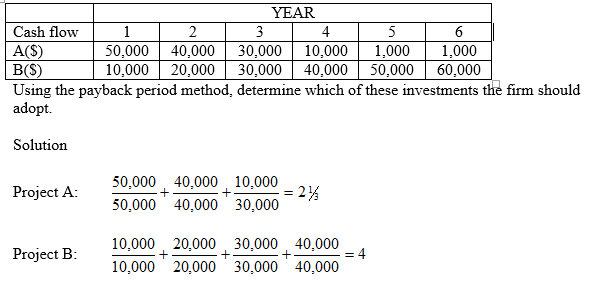This involves calculation of the number years required to return the original investment from net cash flows. The usual decision rule is to accept the project with the shortest payback period, defined as the time it takes an investment to generate sufficient returns to pay back the original investment in full.
Example
Assume that a firm is considering two projects each requiring an investment of Shs.100,000. The firm?s marginal cost of capital is 10%. The net cash flows for investments A and B are shown below.

Using the payback period method, project A
Advantages:
(i) Simple to calculate and understand;
(ii) Uses project cash flows rather than accounting profits and hence is more objectively based;
(iii) Favours quick return projects, which may produce faster growth for the Company and enhance liquidity;
(iv) Choosing projects which payback quickest will tend to minimize those risks facing the Company which are related to time. However, not all risks are related merely to time.
Disadvantages:
(i) Payback does not measure overall project worth as it does not consider cash flows after the payback period. It may be biased for long-range investment.
(ii) Payback method fails to take into account the time value of money.
Titany answered the question on
November 15, 2021 at 08:54